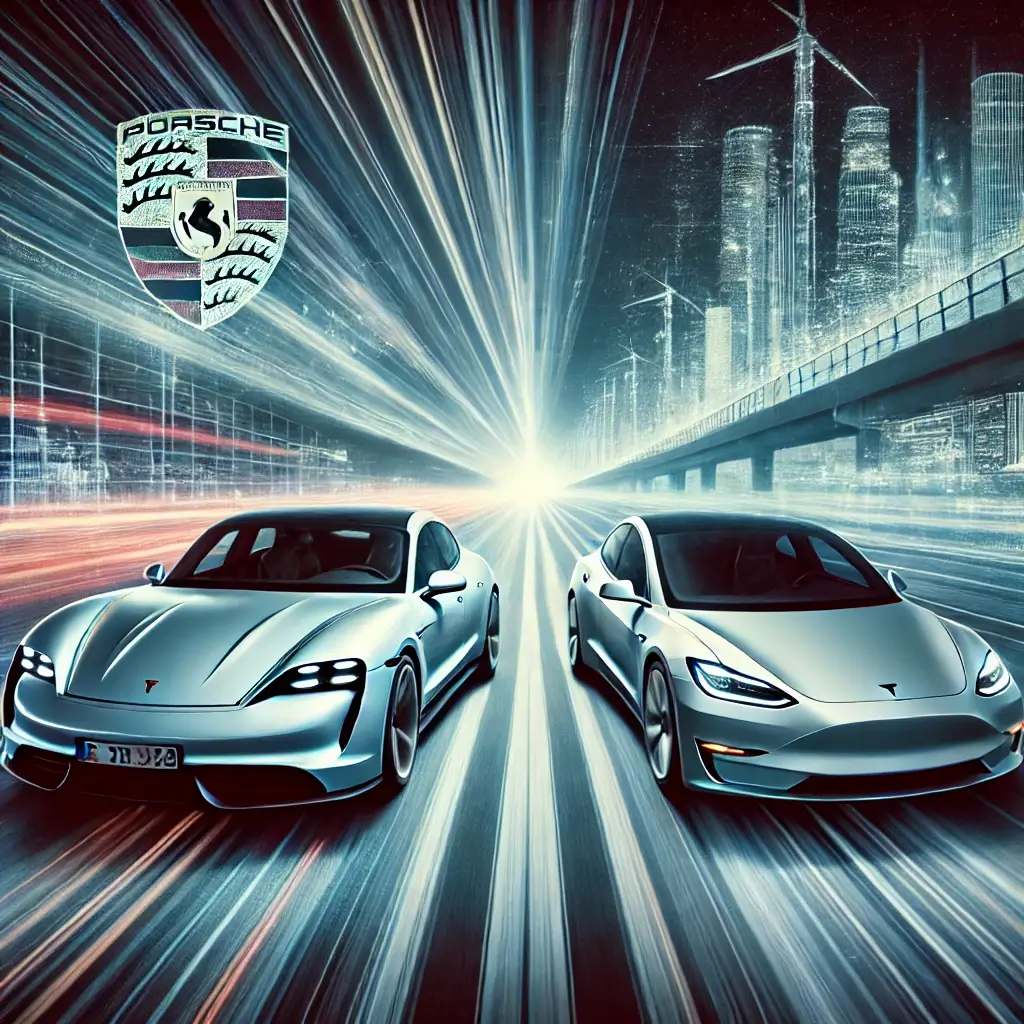The Electric Revolution: Titans of Performance Clash
The electric vehicle (EV) market is in a state of perpetual evolution, with automakers continuously redefining what’s possible in terms of speed, range, and innovation. Leading the charge in this revolution are two giants: the Porsche Taycan Turbo S and Tesla Model S Plaid. Representing distinct philosophies of engineering, these models showcase the pinnacle of modern EV performance. While Porsche leverages its storied history in motorsport and chassis development, Tesla’s expertise lies in software and drivetrain innovation. Together, these vehicles have not only redefined consumer expectations but also set benchmarks for the future of electric mobility. This article examines their unique approaches to engineering excellence and performance supremacy, incorporating insights from investment analyses and recent developments in the EV sector (Morgan Stanley Electric Vehicle Analysis 2024).
Porsche’s Masterpiece: Engineering Excellence in Motion
Porsche’s Taycan Turbo S epitomizes the company’s dedication to holistic automotive performance. Utilizing dual permanent magnet synchronous motors, a two-speed rear transmission, and an 800-volt electrical architecture, the Taycan Turbo S achieves unparalleled thermal management and efficiency. With adaptive air suspension and rear-axle steering, it offers precision handling that is unmatched on the track.
By the Numbers: Taycan’s Track Dominance
Performance Metrics:
0-60 mph in 2.6 seconds
Quarter-mile time of 10.8 seconds
Nürburgring lap time of 7:33
Lateral acceleration of 1.05g
Porsche’s emphasis on track durability and braking efficiency makes the Taycan Turbo S a compelling choice for enthusiasts who demand consistent high performance under extreme conditions (Road & Track Performance Testing 2024).
Tesla’s Speed Demon: Rewriting the Acceleration Rulebook
Tesla’s Model S Plaid offers a contrasting vision of electric performance. Its tri-motor system, carbon-wrapped rotors, and advanced cooling technology deliver staggering acceleration figures. Tesla’s software integration, including over-the-air updates and real-time power distribution, ensures a cutting-edge ownership experience.
Plaid Performance: Breaking Barriers
Performance Metrics:
0-60 mph in 1.99 seconds
Quarter-mile time of 9.23 seconds
Nürburgring lap time of 7:25
Lateral acceleration of 1.02g
Tesla’s focus on straight-line performance and user-friendly technology appeals to a broader audience, though it faces challenges with thermal limitations during extended track use (Car and Driver Technical Review 2024).
The Bigger Picture: EV Market Trends and Investment
Recent research by Morgan Stanley highlights the growing investment in EV infrastructure and performance innovation. Tesla continues to lead in battery chemistry advancements, while Porsche is investing heavily in ultra-fast charging technology. BloombergNEF’s report on EV adoption forecasts a compound annual growth rate of 18% in the premium EV segment, driven by advancements in both performance and consumer accessibility.
Charging Forward: Infrastructure and Accessibility
Porsche has introduced initiatives to improve charging speed and efficiency, including partnerships with Ionity for high-speed charging stations. Tesla, on the other hand, has expanded its Supercharger network globally, ensuring seamless integration for long-distance travelers. Both manufacturers are positioning themselves as leaders in a market expected to grow exponentially over the next decade (Electric Vehicle Technology Review 2024).
Policy Drivers: How Legislation Shapes the Market
Additionally, legislative incentives in major markets such as the EU and US are driving competition. For example, tax credits for EV purchases and investments in renewable energy sources are making premium EVs like the Taycan and Model S Plaid more appealing to consumers. These measures are expected to reduce the total cost of ownership, further bolstering demand (Automotive Engineering Journal 2024).
The Electric Future: Two Paths to Excellence
The Porsche Taycan Turbo S and Tesla Model S Plaid represent two sides of the same electrified coin. Porsche’s emphasis on balance and consistency contrasts with Tesla’s pursuit of raw speed and technological innovation. As the EV market matures, these vehicles will continue to influence design philosophies and consumer expectations, paving the way for an exciting future in electric mobility.
Research Sources
References:
Morgan Stanley Electric Vehicle Analysis 2024
Road & Track Performance Testing 2024
Car and Driver Technical Review 2024
BloombergNEF EV Adoption Report 2024
Electric Vehicle Technology Review 2024
Automotive Engineering Journal 2024
